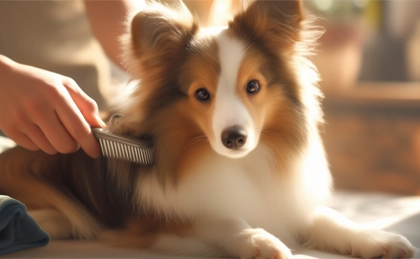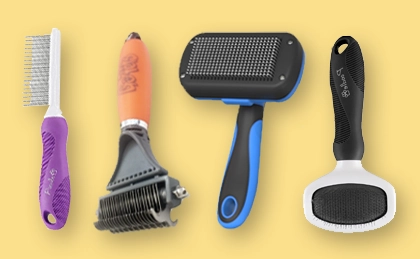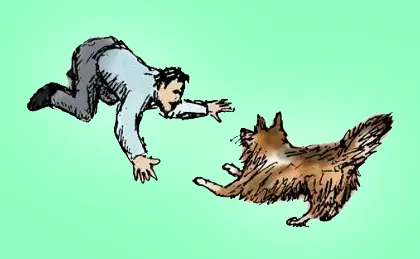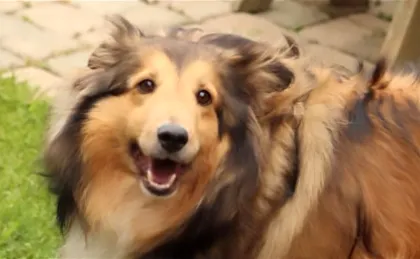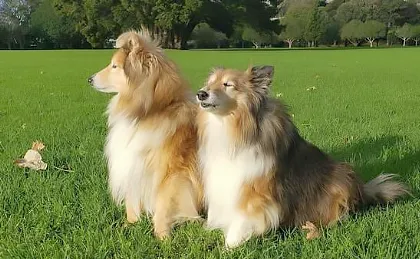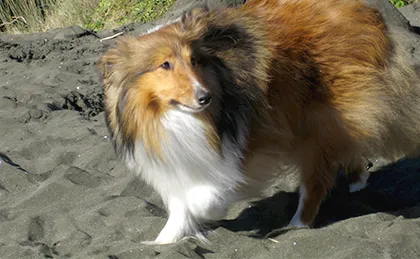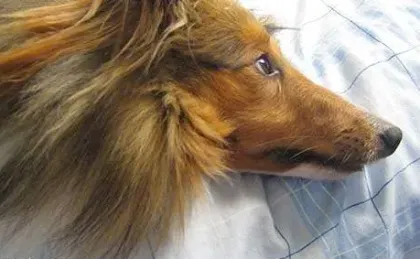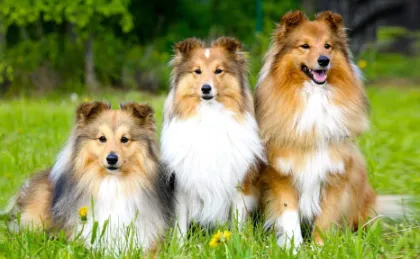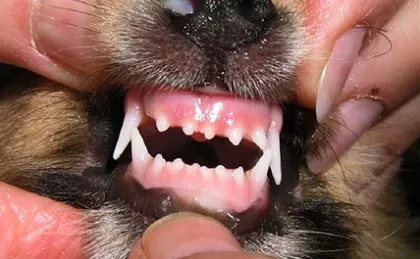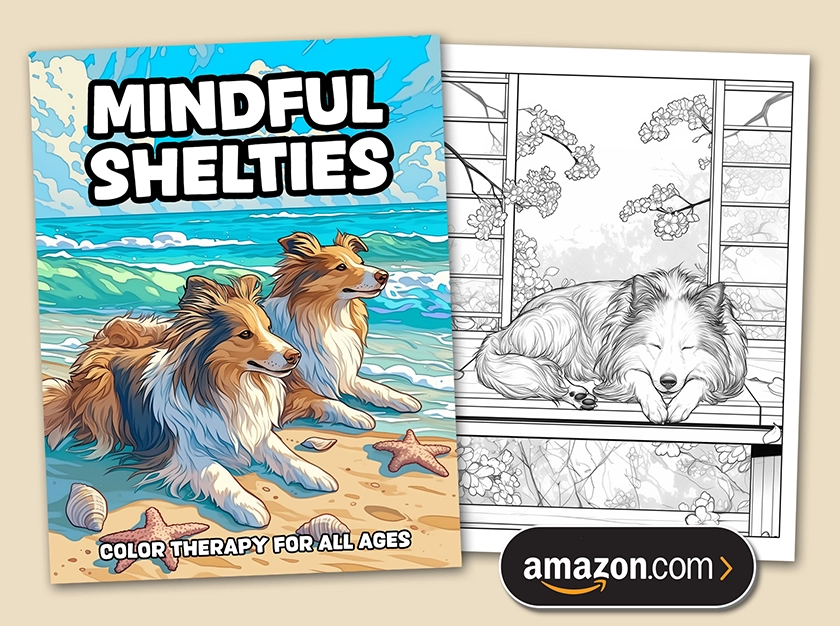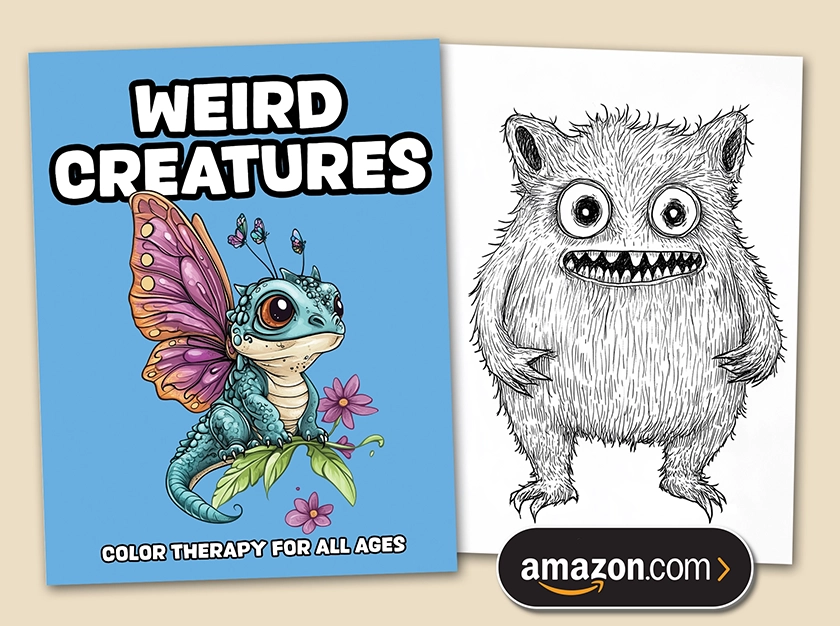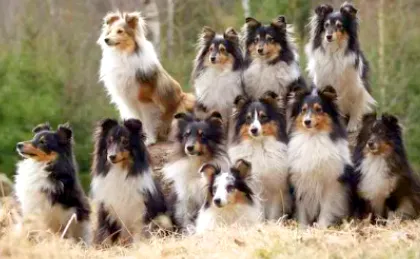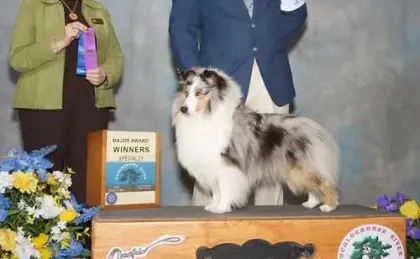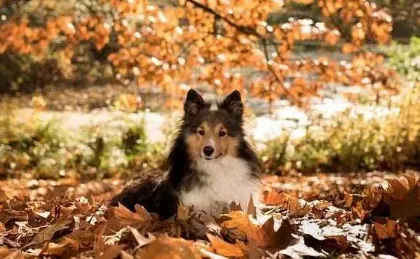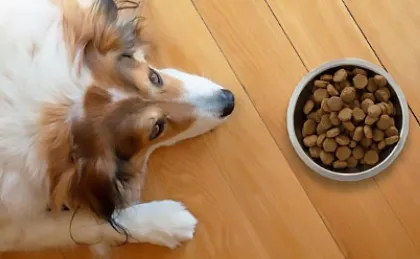Shelties are high maintenance when it comes to grooming and socialization—but relatively low maintenance when it comes to obedience training and exercise needs. Owning a Shetland Sheepdog means embracing both the responsibilities and joys of this intelligent and handsome dog breed. This article delves into the main aspects of Sheltie care so you understand exactly how much commitment is needed.
Grooming Needs: High
The Shetland Sheepdog's iconic double coat is both a blessing and a challenge. Comprising a dense undercoat and a long, water-resistant outer coat, this luxurious fur serves as insulation against harsh weather conditions. However, it also requires meticulous maintenance. Without regular grooming, Shelties develop mats and tangles, particularly behind the ears, under the legs, and around the tail. These can cause discomfort and even skin infections if left untreated.
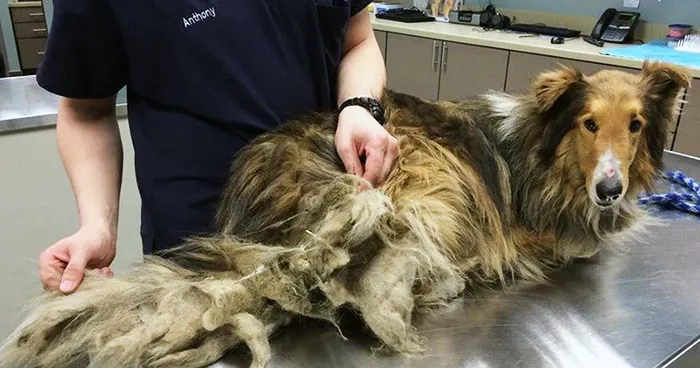
A stray ungroomed Collie rescued by Trio Animal Foundation
When it comes to grooming, Shelties are compared to high-maintenance dog breeds like the Poodle (which requires professional trimming) and the Afghan Hound (which requires daily brushing). The American Shetland Sheepdog Association (ASSA) say you should brush your Sheltie twice a week to prevent matting and tangles, although I find we can leave it weekly to do a deep groom, taking about one hour per dog. A good quality slicker brush, de-matting comb, and fine-toothed comb are essential.
Shelties do shed year-round, with peak shedding in the spring as the coat adapts seasonally for the hot summer. At this time, I spend much longer stripping out the undercoat. With a lifespan of 12-14 years, grooming easily adds up to 1,000 hours when you also factor in bathing, nail trimming, and ear cleaning. For owners who embrace the process, grooming can become a rewarding bonding activity, but for those seeking a relatively low maintenance dog, a Sheltie isn't the best fit.
Exercise Needs: Medium
While Shelties don't have the near-endless stamina of working breeds like the Border Collie, they do need structured daily exercise for general fitness and to prevent obesity, now a major concern in dogs. The American Veterinary Medical Association reports that obesity in dogs reduces their lifespan by up to 2.5 years. Regular activity is therefore an essential part of dog ownership, regardless of breed.
Specifically, the American Kennel Club says Shelties need at least one hour of daily exercise, which is more than some other popular breeds like the Bulldog or Pug. It can be broken into two 30-minute walks and supplemented with active play such as fetch, agility training, or herding-style games for mental stimulation. Indeed, the herding instinct drives them to chase moving things, including children, motorbikes, and cats, making obedience training essential. And while elderly Shelties (10+ years) do slow down, they still benefit from gentle activity to maintain joint health.
Training Needs: Medium
Shelties rank among the top 10 most intelligent dog breeds. They can learn new commands in as little as six repetitions, making them highly trainable and eager to please. However, intelligence comes with its own set of challenges. A poorly trained Sheltie can develop behavioral issues, such as excessive barking, herding small children, and selective listening when distractions arise.
While Shelties excel in obedience and agility training, their high sensitivity requires a positive reinforcement approach like clicker training. Harsh discipline can lead to anxiety, which may manifest in skittishness or nervous behaviors. They thrive in structured environments where training is consistent and engaging. Many Shelties also excel in canine sports, including agility, rally obedience, and even scent work, which provides mental stimulation alongside physical exercise.
Social Needs: High
Shelties are known for their deep loyalty to their families, but their socialization needs vary widely between individuals. Some are naturally outgoing, while others are reserved or even fearful in new situations. Genetics and early socialization play a crucial role in determining temperament. Without proper exposure to a variety of people, places, and experiences during puppyhood, a Sheltie may become overly shy or anxious.
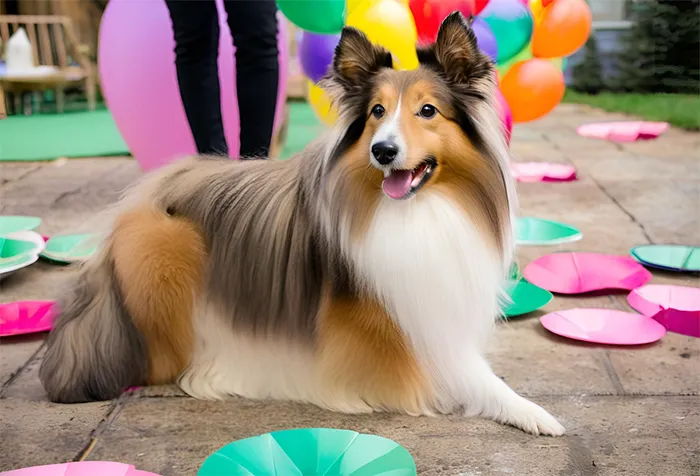
Shelties can be social butterflies or Nervous Nellies
Compared to independent breeds like the Basenji or Chow Chow, Shelties are highly people-oriented and often form strong bonds with their owners. However, their sensitivity means that negative experiences can have a lasting impact. A well-socialized Sheltie is friendly, confident, and adaptable, but achieving this demands intentional effort from an early age. Puppy socialization classes, frequent outings, and controlled introductions to new environments are all crucial in shaping a well-adjusted adult dog.
Health Needs: Medium
Like many purebred dogs, Shelties are predisposed to some genetic conditions like hip dysplasia, Collie Eye Anomaly (CEA), progressive retinal atrophy (PRA), von Willebrand's disease (a blood clotting disorder), and dermatomyositis (a skin and muscle disease). While responsible breeding practices have helped reduce the prevalence of disease genes, Sheltie owners should remain vigilant about routine health screenings.
Another health issue in Shelties is hypothyroidism, which can lead to lethargy, weight gain, and coat deterioration. Regular vet check-ups, a balanced diet, and weight management are key. With deep chests, Shelties are also at moderate risk for bloat: a condition more often seen in large dogs that needs emergency medical attention. Feeding smaller meals and avoiding exercise after eating helps reduce this risk.
Shelties are also prone to dental problems, a common but preventable issue in small to medium-sized breeds. More than 80% of dogs show signs of periodontal disease by age three so be sure to brush your Sheltie's teeth three times a week, use a plaque-reducing water additive, and provide daily dental chews to help limit oral health issues.
Final Thoughts
So, are Shelties high maintenance? In many ways, yes. Their thick coats demand grooming, their intelligence demands mental stimulation, and their social nature demands early and ongoing socialization. However, for those willing to make the committment, Shelties reward us with lifelong affection, loyalty, and entertainment.
Owning a Sheltie isn't just about managing their needs; it's about embracing their personality and the joy they bring to life. With expressive vocalizations and playful antics, Shelties have a way of our capturing hearts, making them the ideal companion. Just remember to keep your sense of humor intact—and maybe a good lint roller.
